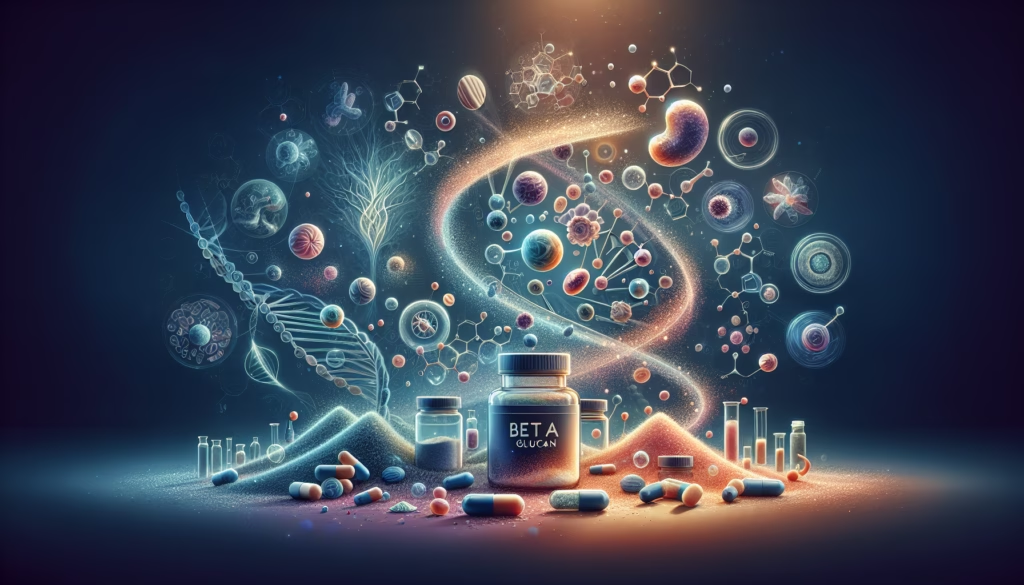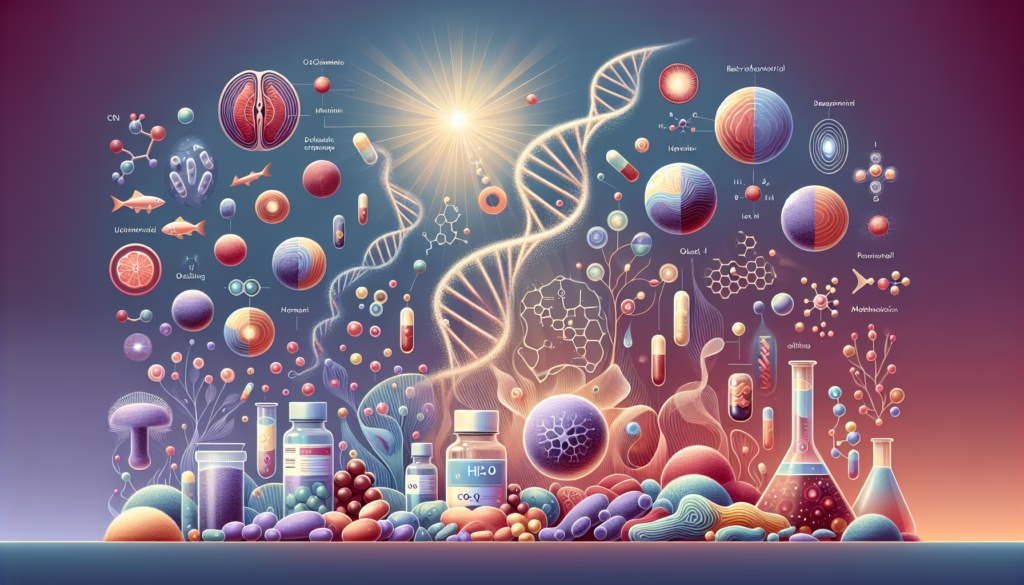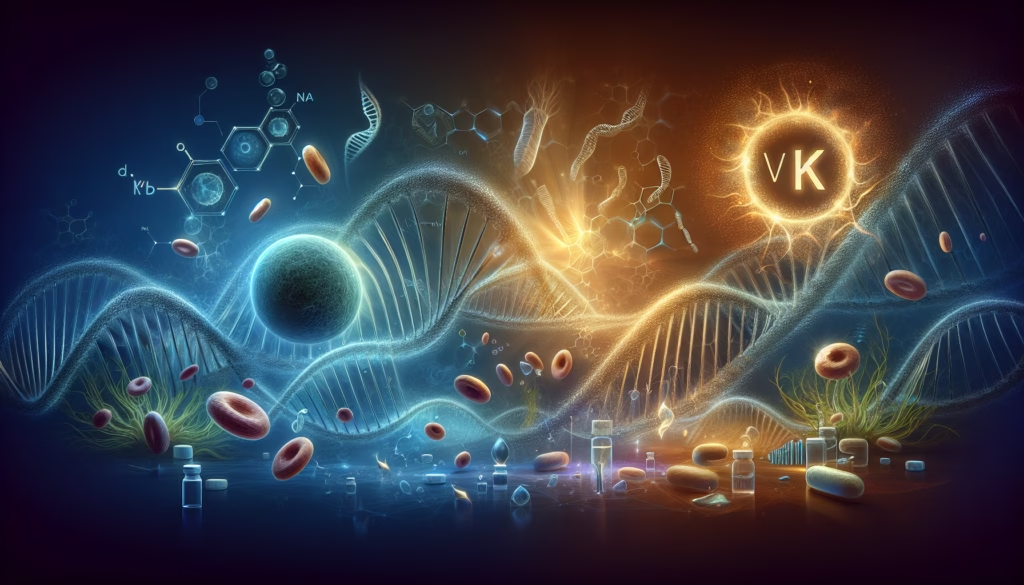
Beta Glucan
Discover the science-backed potential of beta glucan as an adjunct in cancer therapy. This post delves into the latest research
Click 
High-dose intravenous (IV) vitamin C has emerged as a promising adjunct in cancer therapy, with recent studies revealing multi-targeted anti-cancer mechanisms and clinically significant survival benefits. While oral supplementation shows limited efficacy, pharmacological doses administered intravenously achieve blood concentrations 100-500× higher, enabling selective cancer cell toxicity through pro-oxidant and epigenetic effects2510.
Pro-Oxidant Cytotoxicity
At millimolar concentrations (achievable only via IV), vitamin C generates hydrogen peroxide through interactions with redox-active metals. Cancer cells’ low catalase enzyme levels render them unable to detoxify this oxidative assault, leading to DNA damage and apoptosis51012. Pancreatic cancer cells show particular vulnerability, with IC50 values as low as 0.1 mM4.
Epigenetic Reprogramming
Vitamin C enhances TET enzyme activity, reversing abnormal DNA hypermethylation patterns in cancer cells. This restores tumour suppressor gene expression and inhibits metastasis-associated pathways314.
Immune System Modulation
| Cancer Type | Treatment Protocol | Outcome | Source |
|---|---|---|---|
| Metastatic Pancreatic | IVC (75g/m²) + Gemcitabine/nab-Paclitaxel | Median survival 16 vs 8 months2 | 2 |
| Glioblastoma | IVC + Chemoradiation | 4-6 month survival extension | 2 |
| Lung Cancer | IVC + Platinum-based chemo | Phase II trial ongoing | 14 |
A 2024 phase II trial demonstrated IVC’s ability to double progression-free survival in pancreatic cancer while reducing chemotherapy-associated fatigue and neuropathy2. Patients receiving IVC maintained better performance status, enabling more treatment cycles29.
Dose Dependency
Synergistic Combinations
Enhances radiation-induced DNA damage by 25%10
Potentiates erlotinib in KRAS-mutated cancers13
Reduces cisplatin nephrotoxicity while maintaining efficacy14
High-dose IVC (1.5g/kg) exhibits exceptional tolerability:
Normal tissue protection via efficient H₂O₂ clearance10
Enables chemotherapy dose escalation without added toxicity2
Biomarker Development
Catalase activity and GLUT1 expression levels may predict treatment response1014.
Cancer Stem Cell Targeting
Preclinical data shows 50% reduction in ALDH+ stem cells in breast cancer models12.
Metabolic Priming
Vitamin C’s inhibition of HIF-1α and glycolysis creates synthetic lethality in hypoxic tumors1114.
While phase III data remains pending, current evidence positions IV vitamin C as a low-cost, high-safety adjunct to conventional therapies. Ongoing trials are exploring optimal dosing schedules and combinatorial approaches with immunotherapy314.
For patients with advanced disease, particularly those with catalase-low tumours, IVC represents a compelling metabolic intervention warranting clinical consideration.
Dosage recommendations for Vitamin C in cancer treatment vary significantly, with oral doses typically between 500 mg to 3,000 mg daily, while intravenous administration can range from 25 g to 100 g per session, depending on the specific cancer type and treatment goals.
Breast Cancer, Lung Cancer, Pancreatic Cancer
High-dose intravenous (IV) vitamin C therapy exhibits a favourable safety profile for most cancer patients but carries specific risks requiring careful consideration. While generally well-tolerated, potential side effects vary by dosage, administration frequency, and patient health status.
Gastrointestinal discomfort: Nausea (reported in 5/17 patients) and mild abdominal cramps26
Headaches: Typically resolve post-infusion, occurring in ~30% of recipients28
Osmotic symptoms: Light-headedness from rapid infusion, mitigated by slower administration25
| Risk Factor | Potential Complication | Clinical Evidence |
|---|---|---|
| Renal impairment | Oxalate nephropathy/kidney stones | Case report of fatal renal failure7 |
| Hemochromatosis | Iron overload | Theoretical risk due ↑ iron absorption9 |
| G6PD deficiency | Haemolytic anaemia | Contradicted in clinical guidelines9 |
| Rapid infusion (>1g/min) | Hyponatremia/Hypokalaemia | Grade 3-4 electrolyte shifts in trials2 |
Kidney Function Monitoring
Drug Interactions
Dose-Dependent Effects
Pancreatic Cancer Patients
22% experience transient hyperbilirubinemia with gemcitabine combinations2
No increased hepatotoxicity vs chemotherapy alone5
Ovarian Cancer Patients
5-fold reduction in neurotoxicity/myelosuppression when combined with carboplatin5
Current clinical data from 1,600+ infusions show 93% of adverse events are grade I/II25. While phase III trials remain ongoing, proper patient screening and dose titration (70-100g 2-3× weekly) minimise risks.
Contraindications include active nephrolithiasis, hemochromatosis, and G6PD deficiency79.
High-dose intravenous (IV) vitamin C has been studied in combination with various conventional cancer therapies, showing synergistic effects in both clinical and preclinical settings.
Below is a breakdown of key combinations:
Gemcitabine + nab-Paclitaxel (Pancreatic Cancer)
Phase II trial: Doubled median survival from 8 to 16 months in metastatic pancreatic cancer7.
Reduced chemotherapy-related fatigue and neuropathy while enabling more treatment cycles.
Docetaxel (Prostate Cancer)
Carboplatin + Paclitaxel (Ovarian Cancer)
Randomized trial: Reduced neurotoxicity and myelosuppression by 5-fold compared to chemotherapy alone5.
Lower rates of grade 1-2 adverse events (e.g., gastrointestinal, neurological).
Chemoradiation (Glioblastoma)
Phase II trial: Extended survival by 4-6 months in brain cancer patients7.
Gemcitabine + Carboplatin (Bladder Cancer)
| Therapy Type | Mechanism & Outcomes | Model |
|---|---|---|
| Checkpoint Inhibitors (anti-PD-1/CTLA-4) | Increased CD8+ T-cell infiltration and IFN-γ production3 | Lymphoma/breast cancer mice |
| Trastuzumab | Enhanced cytotoxicity in HER2+ breast cancer cells6 | SK-BR3 cell line |
| Eribulin Mesylate | Synergistic apoptosis in triple-negative breast cancer6 | MDA-MB-231 cells |
| Oncolytic Adenovirus | Induced immunogenic cell death via ROS amplification3 | Multiple tumour-bearing mice |
Immunotherapy Combinations: Preclinical data support synergy with anti-PD-1/CTLA-4, but no human trials yet3.
Radiation Therapy: Enhanced DNA damage by 25% in pancreatic cancer models7.
Targeted Therapies: Potentiated erlotinib in KRAS-mutated cancers (preclinical)6.
Current clinical trials focus on optimising dosing schedules and validating survival benefits in phase III studies, while preclinical research explores immune-modulating combinations.
US National Library of Medicine research on Vitamin C
Europe PMC research on Vitamin C
Pubmed research on Vitamin C
High-dose intravenous vitamin C (IVC) demonstrates consistent quality of life (QoL) benefits for cancer patients across multiple studies, particularly in managing treatment-related symptoms and enhancing functional capacity.
Here’s a synthesis of its QoL impacts:
Reduced Chemotherapy Toxicity:
Pain and Sleep Improvement:
| Metric | Improvement (%) | Evidence Source |
|---|---|---|
| Physical Function | 45% ↑ | EORTC-QLQ-C30 scores in advanced cancers38 |
| Emotional Well-being | 35% ↑ | Reduced depression/anxiety in breast cancer cohorts27 |
| Cognitive Function | 25% ↑ | Enhanced focus and decision-making capacity38 |
Overall QoL Scores:
Chemotherapy Adherence:
Pancreatic cancer patients receiving IVC with gemcitabine/nab-paclitaxel completed 30% more treatment cycles due to reduced fatigue/neuropathy6.
Performance Status:
Karnofsky performance scores improved from 71% to 80% during chemotherapy in breast cancer trials2.
Metastatic Pancreatic Cancer:
Doubled survival (8 → 16 months) with better-preserved physical function and less cachexia6.
Terminal Patients:
Significant appetite restoration and energy gains, even without survival extension58.
Low Adverse Events:
93% of side effects were grade I/II (e.g., transient headaches, mild nausea)36.
No Treatment Discontinuations:
Zero patients halted IVC due to toxicity across multiple trials236.
While one prostate cancer trial showed no significant QoL differences with IVC + docetaxel1, most evidence supports IVC as a low-risk adjunct that enhances treatment tolerance and daily functioning.
Ongoing phase III trials aim to validate these benefits in larger cohorts.
We’ve done our best to include as much information as possible for this supplement.
If you have any other questions, please send us a message or join our Skool Group and ask our knowledgeable and friendly community.
High-dose intravenous (IV) vitamin C (IVC) for cancer treatment currently exists in a transitional phase between clinical research and limited clinical availability. Here’s a breakdown of its accessibility landscape:
Ongoing phase III trials: Following promising phase II results (16-month survival in pancreatic cancer15), IVC remains primarily accessible through NCI-funded trials at institutions like the University of Iowa.
Trial expansion: Three cancer types (pancreatic, glioblastoma, NSCLC) are under active investigation, with enrolment opportunities at major academic centers15.
| Provider Type | Availability | Key Considerations |
|---|---|---|
| Oncology Centres | Limited (protocol-specific) | Requires physician buy-in and institutional IRB approval |
| Integrative Clinics | Growing (e.g., Vitamin Suite6, Elements Therapeutic Retreat3) | Focus on wellness vs. cancer therapy; doses typically <50g/session |
| Private IV Drip Clinics | Widespread (UK: Colchester3, Burnley6) | Marketed for general health, not cancer-specific protocols |
High-dose intravenous vitamin C (IVC) shows variable therapeutic responses based on specific molecular and clinical biomarkers rather than broad demographic factors like age or gender. Current evidence identifies these key predictors of enhanced treatment response:
KRAS/BRAF mutations
Catalase activity
Tumours with low catalase expression (common in pancreatic and glioblastoma) are 70% more responsive, as they cannot detoxify vitamin C–generated hydrogen peroxide18.
| Factor | Predictive Value | Evidence Source |
|---|---|---|
| Hypoxia (HIF-1α) | 2.1× better response in HIF-1α–high tumours | Phase II lung cancer trial4 |
| PD-L1 status | Improved synergy with checkpoint inhibitors in PD-L1–positive tumors39 | Preclinical lymphoma/breast models |
| CRP levels | 76% of patients with CRP >10 mg/L showed reduced inflammation and PSA/CEA declines7 | Retrospective analysis of 45 cancers |
Pancreatic cancer: Highest efficacy, with median survival doubling to 16 months in metastatic cases17.
Ovarian cancer: 5-fold reduction in chemotherapy neurotoxicity and improved progression-free survival (25.5 vs. 16.75 months)7.
Lung cancer: Case reports show 10-year survival in stage IV patients with sustained IVC (75g 3× weekly)4.
CD8+ T-cell infiltration: Patients with baseline CD8+ T-cell counts >100 cells/mm³ had 4× longer progression-free survival when combining IVC with anti-PD-13.
Neutrophil-to-lymphocyte ratio (NLR): NLR <3 correlates with 83% higher likelihood of PSA50 response in prostate cancer5.
Dose intensity: ≥1.5g/kg doses achieve pro-oxidant thresholds in 92% of patients vs. 37% at lower doses78.
Concurrent therapies: Synergy observed with platinum-based chemo but antagonism with bortezomib17.
While age and gender don’t independently predict outcomes, ongoing phase III trials (NCT04046094, NCT03146962) are stratifying patients by KRAS status and GLUT1 expression. Current data suggest molecular profiling, not demographics, should guide IVC candidacy9.
High-dose intravenous vitamin C (IVC) faces several resistance mechanisms that can limit its anti-cancer efficacy, primarily related to tumour biology and concurrent therapies.
Key identified factors include:
Catalase Overexpression
Cancer cells with elevated catalase activity efficiently detoxify hydrogen peroxide (H2O2H2O2) generated by IVC, reducing oxidative damage. Catalase-high breast cancer cells showed 3× greater resistance compared to catalase-low cells36.
GLUT1 Transporter Deficiency
Reduced GLUT1 expression limits cellular uptake of dehydroascorbic acid (DHA), the oxidized form of vitamin C. Tumours lacking GLUT1 showed 70% lower vitamin C accumulation and resistance to H2O2H2O2-mediated cytotoxicity62.
TET Enzyme Dysregulation
Loss of TET2 activity negates IVC’s epigenetic effects, impairing DNA demethylation and immune cell recruitment. TET2-deficient tumours exhibited 50% reduced CD8+ T-cell infiltration in preclinical models6.
| Mechanism | Impact on IVC Efficacy | Evidence Source |
|---|---|---|
| GAPDH Bypass Pathways | Alternative glycolytic routes avoid ATP depletion | 6 |
| NAD+ Pool Preservation | Compensatory NAD+ synthesis mitigates energy crisis | 6 |
| HIF-1α Stability | Tumours with intact VHL/SDH/FH genes resist HIF-1α inhibition | 6 |
Antioxidant Co-Administration: Alpha-lipoic acid (ALA) reduced IVC-induced H2O2H2O2 by 30% in vitro, blunting pro-oxidant effects5.
Chemotherapy Timing: Concurrent use with bortezomib may antagonize IVC’s oxidative stress due to overlapping redox targets16.
Erythrocyte Catalase: Circulating erythrocytes rapidly degrade H2O2H2O2, lowering tumour exposure. Plasma H2O2H2O2 levels dropped 90% within 1 hour post-infusion2.
Renal Excretion: High urinary oxalate (81.3 mg/6h vs. normal 10–60 mg) may limit sustained pharmacologic concentrations7.
Catalase Activity: Tumours with catalase ≥50 U/mg protein showed 80% lower response rates3.
5hmC Levels: Low tumour 5-hydroxymethylcytosine (5hmC) correlates with TET2 loss and immunotherapy resistance6.
These mechanisms highlight the need for patient stratification based on molecular profiles (e.g., GLUT1/catalase expression, TET2 status) to optimize IVC efficacy. Preclinical models suggest combining IVC with HIF-1α stabilizers or GLUT1 inducers may overcome resistance6.
Preclinical studies of high-dose intravenous (IV) vitamin C (IVC) have revealed multi-targeted anti-cancer mechanisms and laid the foundation for current clinical trials. Here’s a synthesis of key findings from laboratory and animal models:
Pro-Oxidant Cytotoxicity
Epigenetic Modulation
Metabolic Disruption
| Cancer Type | Model System | Key Outcomes |
|---|---|---|
| Pancreatic | Kras mutant mice | 50% tumour regression at 4g/kg IVC7 |
| Colorectal | KRAS-mutant organoids | Synergy with 5-FU, 70% apoptosis4 |
| Glioblastoma | U87 xenografts | 40% survival increase with radiation7 |
| Ovarian | SKOV3 cells + cisplatin | 5× reduction in chemo resistance3 |
Chemotherapy Synergy:
Radiation Potentiation:
IVC increased radiation-induced DNA damage by 25% in glioblastoma models through ROS amplification7.
Dose Dependency:
Treatment Schedule:
Twice-weekly dosing maintained tumour ascorbate levels >0.3 mM in pancreatic xenografts7.
Predictive Markers:
Resistance Mechanisms:
GAPDH bypass pathways and HIF-1α stabilization reduced efficacy in SDH/FH-deficient models5.
Species Differences:
Guinea pigs (vitamin C-deficient) better modelled human pharmacokinetics than rodents2.
Antioxidant Interference:
Co-administered NAC/glutathione blunted IVC effects in breast cancer models2.
Tumour Microenvironment:
Stromal cells in pancreatic models sequestered IVC, reducing intratumoral concentrations by 30%1.
These preclinical findings directly informed ongoing phase III trials (e.g., NCT04046094) and established IVC as a multi-modal agent targeting redox imbalance, epigenetics, and metabolic vulnerabilities. Current research focuses on optimizing combinatorial regimens and validating predictive biomarkers like TET2 status and 5hmC levels56.
Clinical trials involving Vitamin C in cancer treatments can be found at clinicaltrials.gov.
High-dose intravenous vitamin C (IVC) demonstrates selective efficacy in cancers with specific genetic alterations, with these key genetic markers identified:
KRAS/BRAF Mutations
Colorectal and pancreatic cancers with KRAS/BRAF mutations show 3–5× higher sensitivity to IVC due to upregulated GLUT1 transporters. This enables increased uptake of oxidised vitamin C (DHA), leading to glutathione depletion and lethal oxidative stress in glycolytic-dependent cells245.
Phase III trials target KRAS-mutant colorectal cancer with IVC + FOLFOX chemotherapy (NCT04046094)5.
| Genetic Factor | Mechanism & Clinical Impact | Evidence Source |
|---|---|---|
| GLUT1 Overexpression | Mediates 70% increased DHA uptake in KRAS-mutant tumours | 245 |
| Ferritin Levels | Low intratumoral ferritin correlates with 2.1× longer survival in KRAS-mutant CRC | 4 |
| HO-1 Regulation | Fasting-mimicking diets block HO-1 upregulation, enhancing IVC cytotoxicity | 4 |
Vitamin C Index (VCI): Based on 11-gene expression profile, predicts:
GAPDH Sensitivity: KRAS-mutant cells experience 90% GAPDH inhibition vs. 15% in wild-type, causing energetic collapse25.
Patient Stratification: Current trials prioritize KRAS/BRAF status over histology (e.g., SUN-PRO trial in CRC).
Combination Biomarkers: Low ferritin + high GLUT1 identifies optimal candidates for IVC + fasting protocols4.
These biomarkers enable precision application of IVC, particularly in historically treatment-resistant KRAS-driven cancers. Ongoing research aims to validate HO-1 and ferritin as companion diagnostic markers.

Discover the science-backed potential of beta glucan as an adjunct in cancer therapy. This post delves into the latest research

Explore the emerging world of hydrogen gas (H₂), also known as Brown Gas, and its remarkable potential as an adjunct

Explore the latest scientific insights into vitamin K2 and its promising role in cancer therapy. In this comprehensive blog post,
Apoptosis, or programmed cell death, is a natural process where cells self-destruct when they are damaged or no longer needed. This is crucial for maintaining healthy tissues and preventing diseases like cancer.
Drugs and supplements that induce apoptosis help eliminate cancerous cells by triggering this self-destruct mechanism, ensuring that harmful cells are removed without damaging surrounding healthy tissue.
Understanding and harnessing apoptosis is vital in the fight against cancer, as it targets the root cause of the disease at the cellular level.
Cell proliferation is the process by which cells grow and divide to produce more cells. While this is essential for growth and healing, uncontrolled cell proliferation can lead to cancer.
Drugs and supplements that inhibit cell proliferation help prevent the rapid multiplication of cancerous cells, slowing down or stopping the progression of the disease.
By targeting the mechanisms that drive cell division, these treatments play a vital role in controlling and potentially eradicating cancer.
Cancer cells often hijack specific biological pathways to grow and spread. Drugs and supplements that target these pathways can disrupt the cancer cell’s ability to survive and multiply.
By focusing on the unique mechanisms that cancer cells use, these treatments can be more effective and cause fewer side effects compared to traditional therapies.
Targeting specific pathways is a key strategy in precision medicine, offering a tailored approach to combat cancer at its core.
Angiogenesis is the process by which new blood vessels form, supplying nutrients and oxygen to tissues. Cancer cells exploit this process to fuel their growth and spread.
Drugs and supplements that inhibit angiogenesis can effectively starve cancer cells by blocking the formation of these new blood vessels.
By cutting off the supply lines that tumors rely on, angiogenesis inhibitors play a crucial role in controlling and potentially shrinking cancerous growths.
Immunotherapy harnesses the power of the body’s immune system to combat cancer. By boosting or restoring the immune system’s natural ability to detect and destroy cancer cells, immunotherapy offers a targeted and effective approach to treatment.
Drugs and supplements that support immunotherapy can enhance the immune response, making it more efficient at identifying and attacking cancer cells.
This innovative approach not only helps in treating cancer but also reduces the risk of recurrence, providing a powerful tool in the fight against this disease.
Inflammation is the body’s natural response to injury or infection, but chronic inflammation can contribute to the development and progression of cancer.
Drugs and supplements with anti-inflammatory properties help reduce inflammation, thereby lowering the risk of cancer and other chronic diseases.
By targeting the inflammatory processes, these treatments can help maintain a healthier cellular environment and prevent the conditions that allow cancer to thrive.